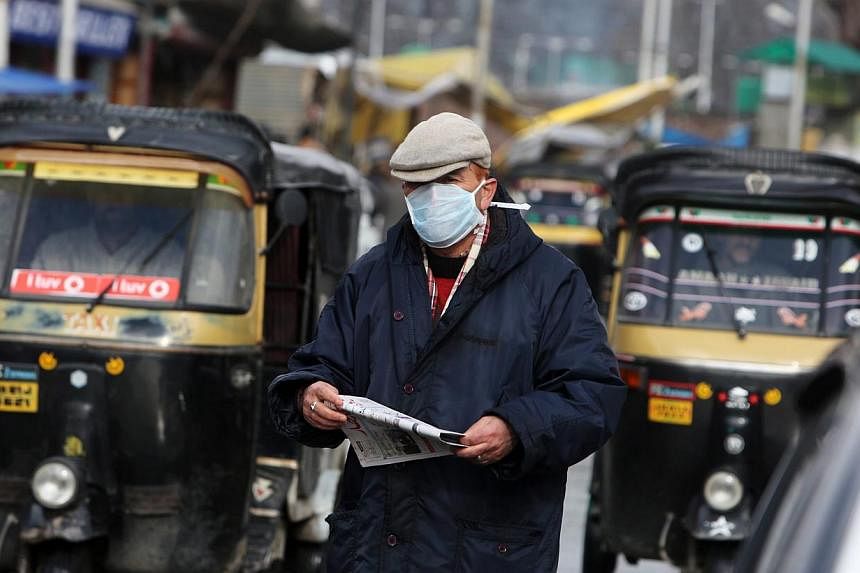NEW DELHI (BLOOMBERG) - India is urging its states to ensure sufficient supply of anti-flu medication and diagnostic tests as it struggles to curb an outbreak of H1N1 influenza that's killed more than 700 people in the last eight weeks.
The government said on Thursday that there's no shortage of the medicines to treat the ailment, after news reports from Jammu & Kashmir in the north to Mumbai in the west said that private chemists were running out of the drug as customers rushed to stockpile supplies. The outbreak has so far sickened more than 11,000 people, and killed 703, the Press Trust of India reported on Thursday.
More people tend to get the flu in the colder months than the rest of the year, though this year's outbreak of H1N1 in northern India appears to be the worst since 2009.
"People are panicking because it's very difficult to differentiate H1N1 from routine flus," Mumbai-based chest specialist Yatin Dholakia said. "Even for doctors it's hard. It's difficult to say why the death rates this year are so high."
Elderly people, pregnant women, young children, diabetics with improperly controlled sugar levels, and HIV patients are at the "highest risk" of developing complications following the flu, as their immune systems tend to be weaker.
Manisha Verma, a spokesman for the Health Ministry did not respond to two calls and an e-mail seeking comments on the outbreak. Gujarat, Rajasthan, Telangana, Delhi and Jammu & Kashmir appear to be the states worst-affected by the outbreak.
"This is the second time we are having a major outbreak," Narendra Raval, a chest specialist in Ahmedabad in Gujarat said, comparing this year's flu season with that in 2009. "Lot of people come in thinking they have it but very few actually have H1N1."
The disease circulating in India now is caused by the H1N1 strain of the influenza virus, and its symptoms include high fevers, sore throat, fatigue, chills and headaches. People can acquire the disease by inhaling virus-loaded droplets ejected by a sick patient's coughing or sneezing, or by touching infected surfaces.
The disease has been spreading rapidly. There were 5,157 reported cases with 407 deaths this year, the Health Ministry said on Feb. 11. In the following eight days, the number of cases more than doubled, the Press Trust of India reported Thursday.
Diagnostic testing services in some cities have been quick to profit on the mass panic by inflating test prices. The newly elected government in Delhi last week capped the price of the the diagnostic test at 4,500 rupees (S$90), after news reports some facilities were charging twice as much, the Financial Express reported Thursday.

